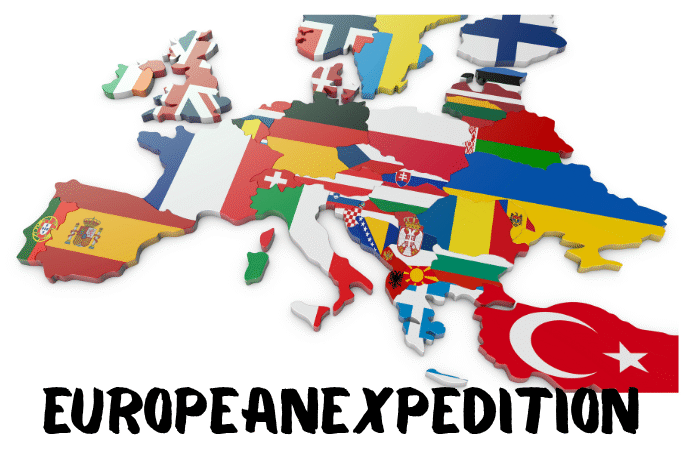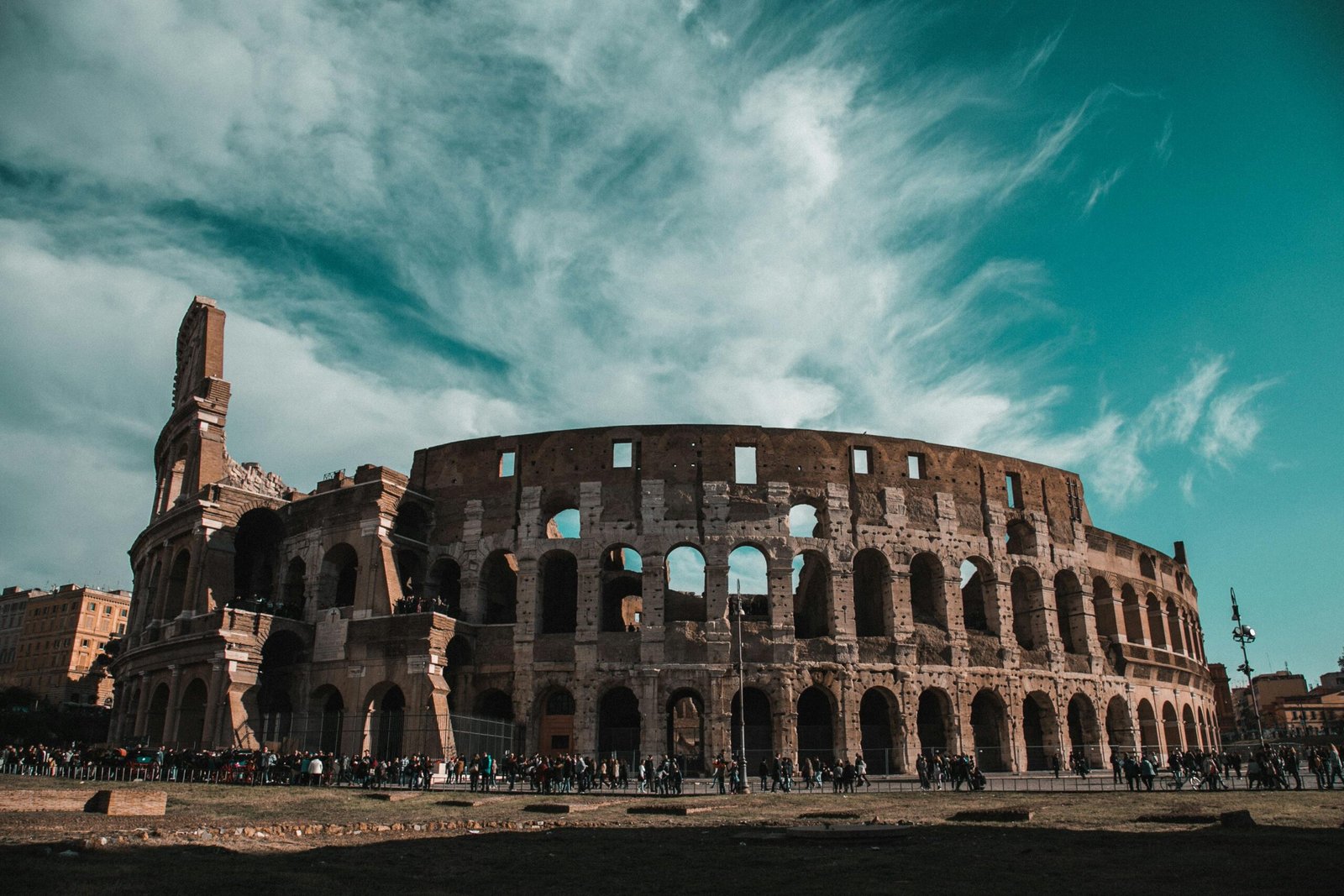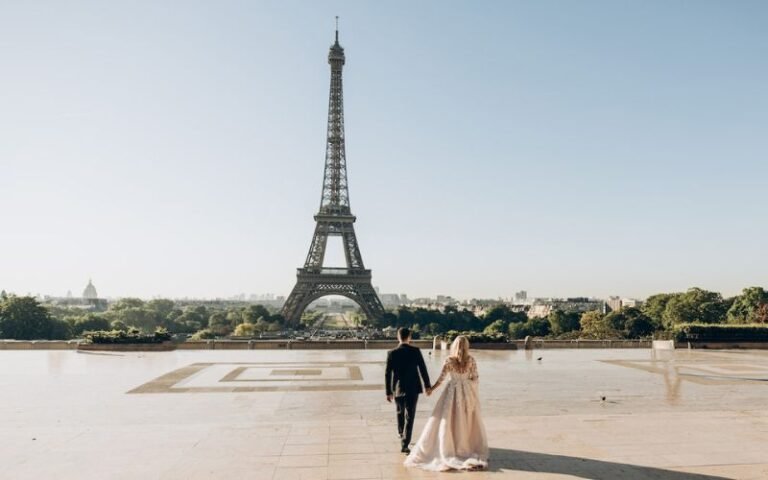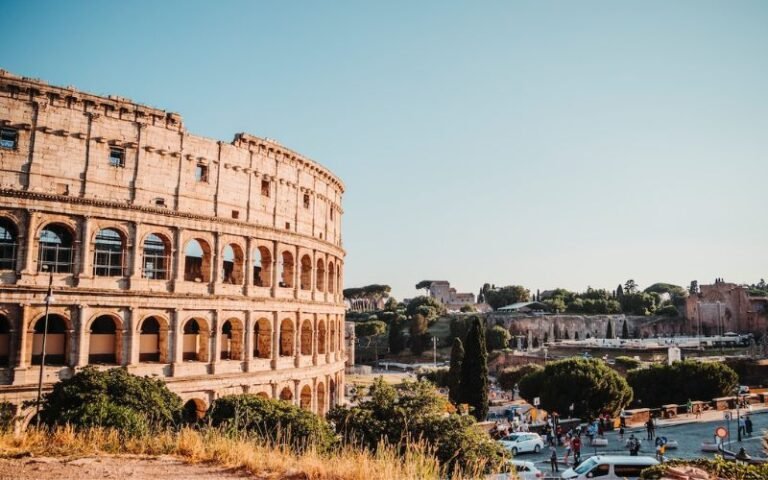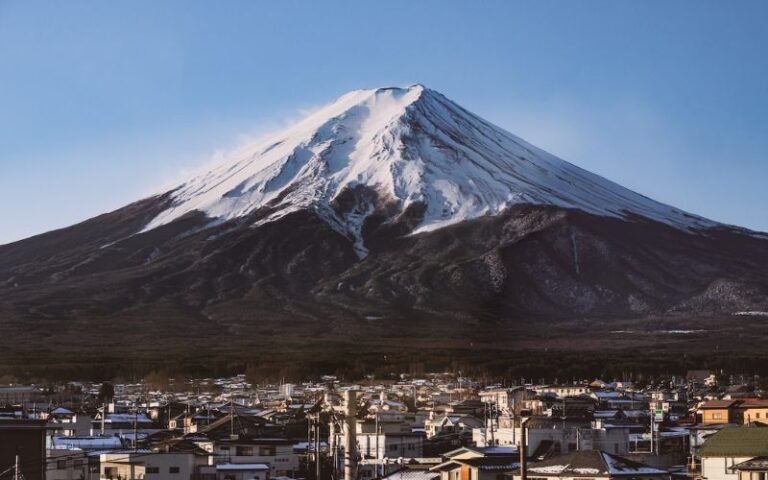- Rome Unveiled: A Traveler’s Guide to the Eternal City
As you step into Rome, the layers of history begin to unfold around you. Each corner has a story, from the grandeur of the Colosseum to the serene beauty of Vatican City. You’ll find much more than just famous sites; the heart of the city beats in its local cuisines and vibrant piazzas. But where should you start? Let’s explore the essential tips that will help you navigate this timeless destination.
Introduction
Welcome to Rome, a vibrant city where ancient history meets modern life.
As Italy’s capital, it draws around 14 million visitors each year, all eager to experience its rich cultural heritage.
You’ll find a unique blend of breathtaking ruins and lively streets that make this city truly one-of-a-kind.
Overview of Rome’s significance as a cultural and historical powerhouse
Rome stands as a vibrant testament to human achievement, blending ancient history with contemporary culture. As you wander its streets, you’ll encounter magnificent ruins, breathtaking art, and architecture that tell stories of empires and revolutions.
The Colosseum, a symbol of Rome’s imperial past, and the awe-inspiring Vatican, a center of spirituality and art, showcase the city’s rich tapestry. Each piazza and cobblestone street pulses with the echoes of philosophers, artists, and leaders who shaped not just Italy but the entire world.
Mention of its status as Italy’s capital and a top destination with 14 million annual tourists
As Italy’s capital, this iconic city draws millions of visitors each year, showcasing its allure as a top travel destination.
With around 14 million tourists annually, Rome stands out for its breathtaking architecture, rich history, and vibrant culture. You’ll find yourself strolling through ancient streets, marveling at world-renowned landmarks like the Colosseum and the Vatican.
The city’s unique blend of historic charm and modern life attracts travelers from all over the globe. Whether you’re indulging in authentic Italian cuisine or exploring bustling piazzas, there’s an undeniable magic in the air.
Rome isn’t just a place to visit; it’s an experience that stays with you long after you’ve left, ensuring you’ll want to return again and again.
A teaser about what makes Rome a unique blend of ancient ruins and modern vibrance
While wandering through the streets of Rome, you’ll quickly discover a captivating juxtaposition of ancient ruins and modern vibrance.
Picture yourself standing in the shadow of the Colosseum, where echoes of gladiators blend with the buzz of contemporary cafes just steps away. You’ll find historic piazzas like Piazza Navona alive with street performers, while high-end boutiques line the cobblestone streets of Via del Corso.
Each corner reveals centuries-old architecture, yet the city pulses with a youthful energy, thanks to its thriving art scene and innovative cuisine.
Whether you’re sipping espresso at a trendy bar or marveling at the ruins of the Roman Forum, Rome invites you to experience its rich history alongside a dynamic, modern lifestyle.
Where is Rome?
Rome sits in the Lazio region of central Italy, marked by its geographic coordinates of 41.902782 latitude and 12.496366 longitude.
This vibrant city isn’t just a geographical spot; it’s a hub of historical significance that has shaped cultures for centuries.
Understanding its location helps you appreciate why Rome has been so strategically important throughout history.
Location in the Lazio region of central Italy
Nestled in the heart of Italy, Rome lies within the Lazio region, where history and modernity coexist. This central location makes it a prime destination for travelers exploring the Italian peninsula.
You’ll find Rome surrounded by picturesque hills, with the Tiber River flowing gracefully through the city. As you wander its ancient streets, you’ll notice how easily you can access other charming towns and cities in Lazio, like Tivoli and Frascati.
The region’s rich culture and stunning landscapes enhance your experience, inviting you to delve deeper into Italy’s heritage. Plus, being centrally located means you can easily hop on a train or drive to nearby attractions, making Rome an ideal base for your Italian adventure.
Enjoy every moment!
Geographic coordinates: Latitude 41.902782, Longitude 12.496366
Located at the geographic coordinates of latitude 41.902782 and longitude 12.496366, this iconic city lies in the heart of Italy.
When you explore Rome, you’ll find it perfectly positioned for easy access to various attractions, whether you’re strolling through the ancient ruins or enjoying a meal in a charming piazza.
Its central location makes it a convenient base for day trips to nearby destinations like Vatican City, Ostia Antica, or the beautiful countryside.
As you navigate the winding streets, you’ll appreciate how these coordinates connect you to centuries of history and culture, enriching your experience.
Brief note on its strategic and historical importance
While you wander through Italy, you can’t overlook Rome’s strategic position that has shaped its historical significance. Nestled at the crossroads of ancient trade routes, it once served as a vital hub connecting Europe, North Africa, and the Middle East.
This advantageous location allowed Rome to flourish as the heart of a vast empire, influencing culture, politics, and commerce for centuries. Its seven hills provided natural fortification, while the Tiber River facilitated transportation and trade.
Throughout history, Rome’s power dynamics shifted, but its allure remained strong, drawing conquerors, artists, and thinkers alike.
Today, as you explore its streets, you’ll sense the echoes of its past, reminding you of the city’s enduring influence on civilization.
Best Time to Visit Rome
When planning your trip to Rome, consider visiting in the spring (April–May) or fall (September–October) for the best experience.
During these seasons, you’ll enjoy milder weather and fewer crowds, making it easier to explore.
Summer can be sweltering and packed with tourists, while winter offers cooler temperatures and a quieter atmosphere.
Recommended seasons: Spring (April–May) and Fall (September–October)
If you’re planning a trip to Rome, consider visiting during the spring or fall for the best experience.
In spring, the city blooms with vibrant flowers, and the weather is pleasantly mild, making it perfect for strolling through historic streets and outdoor cafes. You’ll find fewer tourists than in the peak summer months, allowing for a more intimate experience at popular sites.
Fall offers a similar charm, with warm days and cooler evenings. The autumn colors create a beautiful backdrop, and local festivals celebrate the harvest, adding a unique cultural flair to your visit.
Plus, both seasons feature longer daylight hours, giving you more time to explore Rome’s incredible sights without feeling rushed.
Overview of seasonal weather and crowd levels
Spring and fall aren’t just about pleasant weather; they also bring a balance of manageable crowd levels. During these seasons, you’ll enjoy mild temperatures, typically ranging from 60°F to 75°F (15°C to 24°C).
The blooming flowers in spring and the vibrant autumn leaves create stunning backdrops for your exploration. You’ll find popular sites less congested, making it easier to soak in the history and beauty of Rome.
In spring, festivals and events add to the charm, while fall offers delicious seasonal cuisine. If you’re looking for a more intimate experience, aim for mid-week visits when crowds thin out even further.
What to expect during summer (crowded, hot) and winter (cooler, fewer crowds)
Summer in Rome can be a sweltering affair, with temperatures often soaring above 90°F (32°C) and crowds bustling at every major attraction.
Expect to navigate long lines at the Colosseum and Vatican City, where the heat can feel intense. You’ll want to stay hydrated and take breaks in shaded spots or enjoy gelato to cool off.
In contrast, winter offers a cooler, more tranquil experience.
Temperatures dip to a mild 40-50°F (4-10°C), allowing you to explore without the throngs of tourists. Fewer crowds mean you can appreciate the sights at your own pace, and holiday decorations add a magical touch.
Rome’s Cultural Identity
When you explore Rome, you’ll quickly notice the strong influence of Roman Catholicism on its culture, architecture, and festivals.
Italian is the primary language spoken, though you’ll find that many in tourist areas understand basic English.
From iconic landmarks like the Colosseum and the Pantheon to the grandeur of Vatican City, each site tells a story of Rome’s rich cultural identity.
Dominance of Roman Catholicism and its influence on architecture and festivals
As you wander through the streets of Rome, it becomes clear that Roman Catholicism deeply shapes the city’s cultural identity, influencing everything from its stunning architecture to vibrant festivals.
You’ll find monumental churches like St. Peter’s Basilica, showcasing intricate designs and breathtaking frescoes that reflect centuries of devotion.
Each year, the city bursts into life with celebrations like Easter and Christmas, where processions and masses fill the streets with color and music.
The Feast of the Immaculate Conception lights up the Piazza di Spagna, drawing locals and visitors alike.
Through these religious events, you not only experience the spiritual essence of Rome but also witness how faith intertwines with everyday life, creating a unique atmosphere that’s truly unforgettable.
Language spoken: Italian (with basic English in tourist areas)
While exploring Rome, you’ll quickly notice that Italian is the heart of communication in the city, providing a rich backdrop to its vibrant culture. Knowing a few basic phrases can enhance your experience, making interactions with locals more meaningful.
Don’t be surprised if you hear a mix of dialects, as each region adds its unique flavor to the language. In tourist areas, you’ll find that many people speak basic English, but embracing Italian phrases like “per favore” (please) and “grazie” (thank you) goes a long way.
Cultural significance: landmarks like the Colosseum, Pantheon, and Vatican City
Rome’s cultural identity is intricately tied to its breathtaking landmarks, each telling a story of the city’s rich history.
As you stand before the Colosseum, imagine the roar of thousands witnessing gladiatorial battles. This ancient amphitheater embodies Rome’s grandeur and resilience.
Then, visit the Pantheon, a marvel of architectural innovation, where the oculus connects the heavens to the earth, inspiring awe for centuries.
Finally, Vatican City, the heart of the Catholic Church, showcases the splendor of Renaissance art and spirituality.
Each site offers you a glimpse into the past, enriching your understanding of Rome’s legacy.
As you explore, you’ll feel the pulse of a city steeped in history, culture, and art, making every moment unforgettable.
Must-Try Foods in Rome
When you’re in Rome, you can’t miss the chance to savor iconic dishes like pizza, pasta, and gelato.
Enjoying these flavors at local trattorias, cafes, and markets offers a true taste of Roman culinary traditions.
Get ready to indulge in a dining experience that’s both delicious and unforgettable!
Highlight iconic dishes: Pizza, Pasta, and Gelato
Indulging in the culinary delights of Rome is a must for any traveler, especially when it comes to iconic dishes like pizza, pasta, and gelato.
You can’t visit without savoring a slice of Roman pizza, known for its thin, crispy crust and fresh toppings. Try the classic Margherita, topped with tomatoes, mozzarella, and basil.
Next, dive into a plate of pasta; opt for cacio e pepe or carbonara, both rich in flavor and tradition. Each bite captures the essence of Roman cuisine.
Finally, treat yourself to gelato for dessert. With countless flavors, from creamy pistachio to tangy lemon, it’s the perfect way to cool off while exploring.
Each dish tells a story, making your Roman adventure unforgettable.
Dining experiences at trattorias, cafes, and local markets
While wandering through the charming streets of Rome, you’ll want to immerse yourself in the vibrant dining experiences at trattorias, cafes, and local markets.
At a traditional trattoria, savor rich dishes like cacio e pepe or saltimbocca, made with fresh, local ingredients.
Pop into a cafe for a quick espresso and a cornetto—perfect for fueling your day of exploration.
Don’t miss the local markets, where you can sample artisanal cheeses, cured meats, and seasonal fruits.
Grab a slice of pizza al taglio from a market vendor for a delicious, on-the-go meal.
Each bite tells a story, connecting you to Rome’s culinary heritage and the passionate locals who bring it to life.
Enjoy every moment!
Introduction to Roman culinary traditions
Roman culinary traditions are a delicious blend of history and local ingredients that you simply can’t miss.
When you’re in Rome, be sure to try classic dishes like Cacio e Pepe, a simple yet flavorful pasta with cheese and pepper, and Carbonara, made with eggs, cheese, pancetta, and pepper.
Don’t forget to sample the iconic Roman pizza, known for its thin, crispy crust.
For a taste of tradition, grab some Supplì—fried rice balls filled with mozzarella.
And for dessert, indulge in a slice of Tiramisù or a classic Gelato.
Each bite tells a story, reflecting the city’s rich culture.
Cost and Currency
When you visit Rome, you’ll use the Euro (€) for all your purchases.
The cost of living here is medium-high, so it’s wise to plan your budget accordingly.
Let’s break down some daily expenses for food, transport, and attractions to help you manage your finances while enjoying the city.
Currency used: Euro (€)
In Rome, the currency you’ll use is the Euro (€), a vital tool for navigating the city’s vibrant markets and charming cafes.
You’ll find Euro notes in denominations of €5, €10, €20, €50, €100, €200, and €500, along with coins of €1 and €2, as well as 1, 2, 5, 10, 20, and 50 cents.
When you pay for meals, tickets, or souvenirs, having small change can be handy. Most businesses accept credit and debit cards, but it’s wise to carry cash for smaller vendors or markets.
ATMs are widely available, often offering competitive exchange rates. Just remember to notify your bank of your travels to avoid any card issues while you’re exploring this enchanting city.
Cost of living: Medium-high
While exploring the beautiful streets of Rome, you’ll quickly notice that the cost of living here leans toward the medium-high range.
Rent can be pricey, especially in central neighborhoods, but you’ll find a mix of options to suit various budgets. Dining out often comes with a premium, particularly in tourist hotspots, yet local trattorias offer more affordable choices.
Groceries are reasonably priced, though imported goods might stretch your budget a bit. Public transport is efficient and generally affordable, making it easy to get around without breaking the bank.
Sample daily budget suggestions for food, transport, and attractions
A daily budget of around €50 to €100 can help you enjoy Rome without overspending.
For food, plan on spending about €15 to €30. Grab a slice of pizza or a panino for lunch, and treat yourself to a sit-down dinner at a local trattoria.
When it comes to transport, a single metro or bus ticket costs around €1.50. Consider a day pass for €7 if you plan to travel frequently.
For attractions, many museums charge between €10 to €20 for entry. Don’t forget about free sites like the Pantheon and Trevi Fountain.
With this budget, you can experience Rome’s charm while keeping your finances in check. Enjoy every moment!
Staying Safe in Rome
While Rome is generally safe for travelers, you should stay alert, especially in crowded areas where pickpockets are known to operate.
Using a crossbody bag can help keep your belongings secure, and it’s wise to avoid isolated areas at night.
General safety: “Generally safe, but watch out for pickpockets”
Rome, with its rich history and vibrant culture, is generally a safe destination for travelers. You’ll find the streets bustling with locals and tourists alike, creating an inviting atmosphere.
However, it’s crucial to stay vigilant, especially in crowded areas like public transport or popular tourist spots. Pickpockets can be a nuisance, so keep your belongings secure. Use zippers and keep bags close to your body. Avoid letting your phone or wallet dangle from your pockets.
While incidents of theft aren’t rampant, being cautious can help you enjoy your trip without worry. Always trust your instincts; if something feels off, it probably is.
Tips for travelers: using crossbody bags, avoiding isolated areas at night, and staying alert in crowded places
To enhance your safety while exploring Rome, consider using crossbody bags, which keep your belongings secure and close to your body. This way, you can easily access your essentials while minimizing the risk of pickpockets.
As night falls, steer clear of isolated areas. Stick to well-lit streets and populated places to ensure you’re surrounded by other travelers and locals.
Additionally, stay alert in crowded spots like markets and public transport. Keep your bag in front of you and be mindful of your surroundings. If someone bumps into you, don’t hesitate to check your belongings.
Iconic Attractions and Landmarks
Don’t miss the charm of local favorites like Trastevere and Campo de’ Fiori, where you can experience the city’s vibrant culture.When you visit Rome, you’re stepping into a world rich with history and beauty.
From the grandeur of the Colosseum to the spiritual allure of Vatican City, each landmark tells a unique story.
Colosseum – gladiator battles and ancient Roman entertainment
The Colosseum stands as a monumental testament to ancient Roman engineering and entertainment, drawing millions of visitors each year. As you step inside this grand arena, you can almost hear the echoes of gladiator battles and the roar of enthusiastic crowds.
Imagine the thrill of spectators watching fierce contests between gladiators, wild animals, and even theatrical performances.
To truly appreciate its history, consider joining a guided tour that reveals fascinating stories behind this architectural marvel. You’ll learn about the intricate trapdoors and underground chambers that facilitated dramatic entrances.
Don’t forget to wander around the exterior, where the Colosseum’s age and beauty come alive. Embrace the energy of this iconic site, and witness the legacy of ancient Rome firsthand.
Vatican City – spiritual and artistic treasures

Vatican City, the world’s smallest independent state, is a treasure trove of spiritual and artistic wonders waiting to be explored.
Begin your journey at St. Peter’s Basilica, an architectural marvel that boasts Michelangelo’s stunning dome. Don’t miss the awe-inspiring Pietà, a testament to his genius.
Next, head to the Vatican Museums, where you’ll encounter a vast collection of art, including Raphael’s magnificent frescoes. The highlight, of course, is the Sistine Chapel, where you can marvel at Michelangelo’s iconic ceiling.
As you wander through these sacred spaces, take a moment to appreciate the profound spiritual significance they hold.
Vatican City isn’t just about art; it’s a place where history, faith, and creativity intertwine, offering an unforgettable experience.
Trevi Fountain, Spanish Steps, and Pantheon
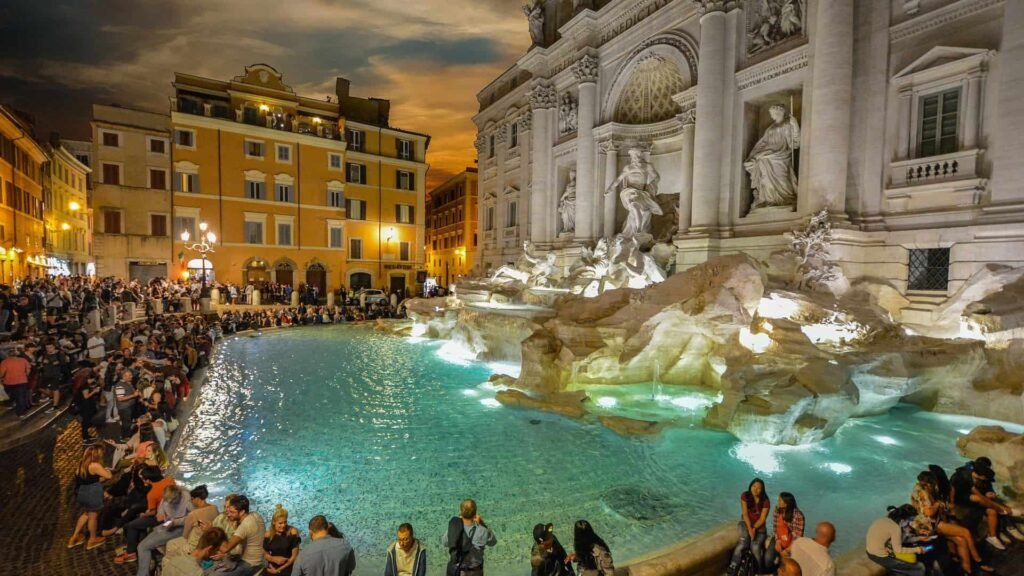
After soaking in the spiritual and artistic wonders of Vatican City, it’s time to explore some of Rome’s most iconic landmarks.
First up is the Trevi Fountain, where you can toss a coin over your shoulder and make a wish. The intricate sculptures and cascading water create a breathtaking scene, especially at night when it’s illuminated.
Next, head to the Spanish Steps, a perfect spot for people-watching and soaking in the vibrant atmosphere. Climb the 135 steps to enjoy a fantastic view of the city.
Finally, visit the Pantheon, an architectural marvel with its impressive dome and oculus. Step inside to appreciate the serene beauty of this ancient temple, which has stood the test of time.
Enjoy every moment in these enchanting spots!
Mention local favorites like Trastevere and Campo de’ Fiori
Explore the charming neighborhood of Trastevere, where cobblestone streets and vibrant piazzas invite you to wander. As you stroll, soak in the lively atmosphere filled with artisanal shops and cozy trattorias.
Don’t miss the stunning Santa Maria in Trastevere, one of Rome’s oldest churches, adorned with beautiful mosaics.
Next, head to Campo de’ Fiori, a bustling market by day and a lively gathering spot by night. Here, you can browse fresh produce and local delicacies, then relax at one of the many outdoor cafés.
The square’s energetic vibe makes it perfect for people-watching. Both Trastevere and Campo de’ Fiori offer a glimpse into local life, making them must-visit spots on your Roman adventure.
Final Thoughts
As you wrap up your journey through Rome, it’s clear why this city enchants millions each year.
Its unique mix of ancient history and modern life invites you to explore not just the famous sights but also the vibrant streets filled with stories.
Why Rome captivates millions of travelers
Although countless destinations vie for your attention, Rome stands out as a timeless treasure that captivates millions of travelers every year.
Its vibrant streets pulse with life, history, and culture, drawing you into a world where every corner tells a story. You’ll find yourself enchanted by the majestic architecture, from the Colosseum to the Vatican, each site igniting your imagination.
The aroma of fresh pasta and rich espresso fills the air, tempting your taste buds and inviting you to savor authentic Italian cuisine.
Engaging with the locals adds a unique charm, as their warmth and passion for their city create lasting memories.
Rome isn’t just a destination; it’s an experience that lingers in your heart long after you leave.
Its blend of antiquity and modernity
Rome’s charm lies not only in its rich history but also in its seamless blend of antiquity and modernity.
As you stroll through its streets, you’ll encounter ancient ruins nestled beside contemporary cafes and boutiques. The Colosseum stands proud, while nearby, sleek buildings house trendy shops, creating a captivating juxtaposition.
You can enjoy an espresso in a centuries-old piazza, surrounded by vibrant street art that speaks to the city’s evolving culture. This harmonious mix invites you to appreciate the layers of time, as historic architecture coexists with innovative design.
It’s a city that embraces change while honoring its past, making each exploration a unique experience. In Rome, the old and new dance together, enriching your journey through the Eternal City.
Encouragement to explore beyond the obvious landmarks and embrace its vibrant street life and history
While the iconic landmarks of Rome are undoubtedly breathtaking, don’t miss the opportunity to wander off the beaten path and immerse yourself in the city’s vibrant street life.
Explore the narrow cobblestone streets of Trastevere, where charming cafes and local artisans bring the culture to life. Chat with vendors in Campo de’ Fiori, or sip an espresso as you watch Romans go about their day.
Discover hidden gems like the Quartiere Coppedè, where eclectic architecture tells a story of its own. Each corner reveals history and character, showcasing the essence of Roman life beyond the Colosseum and Vatican.
Embrace spontaneity—get lost in the alleys, and let the city’s pulse guide you to unforgettable experiences.
